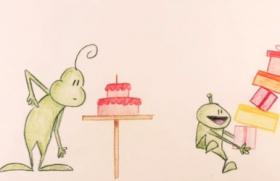 I just finished a winter assignment and thought I’d share a bit about “the making of” this new animation.
I just finished a winter assignment and thought I’d share a bit about “the making of” this new animation.
This project really started a few years ago, when I was given the FAX jr. animation stand used at the Animation Lab at Capital Children’s Museum. (I used to run the program at the museum, and the animation stand is an old friend.) I invested in a new camera and software to shoot single frame animation, and did some tests to make sure it was all working.
The stand really pulled me away from computer animation and back into physical media of drawings and objects. I decided to give myself an assignment of completing a fully drawn animated project. But what to do?
Study
Choosing to animate something is choosing to devote a substantial amount of time. Set out in the wrong direction and much time and effort can be wasted. I decided to spend some time studying and thinking before committing to any one idea. This sent me in a number of interesting directions.
When I first started animating in the 1980’s, there were just two or three books available. Cartoon Animation by Preston Blair and Frank and Ollie’s Illusion of Life were the two best known and referenced.
Since then there have been some great new books and DVDs. I dove in and devoured a few:
Richard Williams’ The Animator’s Survival Kit and accompanying videotaped lectures led me to fill two notebooks with lessons over the course of about six months or so. He is probably best known for his work on Roger Rabbit. His lessons were both clear and somewhat contrary to how Frank & Ollie taught Disney-style animation.
Other books include two volumes of lectures by Disney art instructor Walt Stanchfield, called Drawn to Life. He talks about many things, but especially about the value of good poses and staging, and to always be sketching. Andreas Deja also contributed an excellent book called The Nine Old Men with samples from Disney’s earliest, best animators.
Collections of lectures from the Disney studios have been published in a book called Before Ever After, allowing animators today the ability to sit in on the same classes that led to Snow White and Fantasia by reading the notes for each class. Instructors included other animators as well as people such as Frank Lloyd Wright. Quite an inspirational read.
Audio
During this time, I found an old cassette tape of a recording I had done in the early 1980’s while working at a radio station in Florida. I was playing with reel to reel tape decks, decks speed and multiple tracks and had recorded a very short version of Happy Birthday. It sounded a bit like chipmunks.
The happy birthday audio seemed like a perfect place to start. It was extremely short, but long enough. I could have some little creatures sing and interact.
It was also timely. In the fall of 2015 legal rulings were pushing Happy Birthday into the public domain. A happy birthday animation could be finished in time to celebrate the song’s new status.
The Project
The project began to shape up. The intensive study made me realize I had some goals to accomplish:
– full, hand drawn animation
– multiple characters
– strong poses
– full bodies
– straight ahead and pose to pose action
– lip sync
– 30 frames per second, shot on ones
I also wanted to have it be a good fall and winter project – something to fill time on cold weekends or nights. The animation stand has warm lights.
Timing
In September 2015, I started with a digital copy of the audio. I printed it out the waveform, and broke it down into its component parts to see where the words started and ended. I used math to figure out how many frames would be needed, and at which frame the various syllables landed. Since there were two voices, I did this for each vocal track independent of one another.
This gave me a guide and timing for the basic scene. I then worked out character designs and a bit of “business” for them. I did some thumbnail sketches and then a bit of storyboarding to figure out where everything would be at each moment of the animation. I knew that it would take a certain amount of time for certain words to be said, and worked out the corresponding action for each character.
Animating
In this project, I worked my way through the soundtrack with one character at a time, first doing key drawings at known time marks, then filling in the in-betweens to smooth the action. This was about 240 drawings, using the backlit animation drawing desk and a blue pencil. It’s rough, but begins to take shape. I did the big alien first.
Drawing each frame requires thinking about what came before, and what comes next. It’s important to keep volumes consistant, consider weight and balance, and to be able to breathe some life into the work. Planning is essential, as is a pencil sharpener and an eraser.
I decided early on to shoot on ones, meaning one drawing for each frame. Shooting on ones isn’t always done, as it is time-consuming. Most people save themselves the work by shooting on two’s (each drawing gets photographed twice). But animator Richard Williams made a strong case for giving it a try (it’s smoother and more alive), and I wanted this project to challenge me in a way that would allow me to think future projects were easy by comparison. I wanted to do something intentionally difficult.
Add to this that most of the great Disney films were shot at 24 frames per second. I was raised in the video age and am more used to 30 frames per second, and my internal animation clock has gotten used to 30. I decided to aim for something almost absurd: 30 individual drawings per second.
The second character for me to do was the smaller alien carrying boxes. I did the first half of his running around as straight-ahead animation. This means that I started at the beginning and let the spirt move me in terms of footwork and positions. The second half required the little alien to hit some specific marks at specific times, so I did key frames and worked from pose to pose.
Pencil Tests
At various milestones, I used the animation stand to shoot pencil tests to see how everything is working, and to see what corrections are needed. My first test was October 24, 2015, and was just the first character. I did other tests as I finished other characters, as I cleaned up my work, and as I colored.
Bday pencil test #2 from Christopher Grotke on Vimeo.
Pencil tests allowed me to see where I needed to speed things up or slow them down. I fixed some of the fancy footwork, and made some of the mouth movements more pronounced by changing the head shapes a bit more, increasing the squash and stretch of the head when the mouth moves. Revised sketches get shot again as more tests; artwork continues to get cleaned up and lines get better defined. I did more pencil tests around Nov 11-15, 2015.
The core of the short cartoon was done, but it needed an introduction of some sort. A set up. My creatures had become aliens of some sort, so an arrival by spaceship seemed like an easy an appropriate beginning.
I did the planning and pencil tests for the intro. In the process I realize that to do a slow spaceship door opening would be a painful amount of drawings, so I opt for a hold, then a fast zoom through the side of the ship. One of Terry Gilliam’s tricks is to find ways to avoid animating something if it can be suggested, and this was a good time to deploy that trick.)
Pencil tests were finally complete. (If I were working on Snow White, this is where I’d be handing this off to the inkers and painters. No such luck, though.) Time to redraw everything!
Clean-up and Color
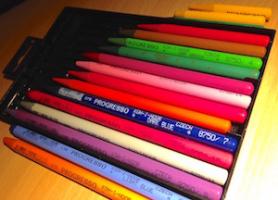
I don’t like choosing colors. I spend some time working with Lise as a color consultant. I was limited somewhat by the colors in my colored pencil box, but we did a number of tests and chose some good color combinations.
This is where the animation table comes in handy again. I was able to put the original pencil sketches down, backlight them, and see where to draw with colored pencils on a new sheet of paper. This allows me to choose the best lines (and commit to them!). It also allows me to do some additional final animation of finer details, such as fingers and flames.
This takes quite a while. I have to draw the table and cake the same way over and over. I work my way through one color at a time, then start over and go through the pile of drawings with the next color until complete. After the table and cake I draw the gun, then each box, then the small bluse alien in the box. I color the small alien, then the big alien. My final coloring is the spaceship, and some enhancement to the flame and laser blast.
I shoot this as a new pencil test, just color outlines. Not really necessary, but why not?
Aliens’ Happy Birthday Message – color outline test from Christopher Grotke on Vimeo.
Final Coloring
Time to color it all in. I’m finally free from sitting at the animation drawing desk, but there is much coloring to do. I go through the pile of final art one color at a time. The table. The cake. The gun. Each box. Each character. I’m happy I didn’t choose a longer song. Old TV movies and game shows, and cats, keep me company.
By March 21, 2016, it was all colored in.
I worked on the titles, and then shot the all of the final artwork. This means setting the lights and exposure, make sure the images are properly framed, then taking a high-resolution photograph of each drawing in sequence. It takes a bit over an hour to shoot the 300+ final frames.
My previously-new colored pencils have taken a beating. It’s fun to see which got used the most. (Hooker’s Green and Carmine)
Final Soundtrack
The soundtrack, however, needs some work. It has the vocals, but no sound effects. I re-do the soundtrack adding effects of spaceships, lasers, magical appearances, thuds, and outro music. This adds a bit more time, but really helps with brining it all to life.
And now the animation project is done. I upload the Alien’s Birthday Message to video sharing sites and let it free in the cybersphere.
Aliens’ Happy Birthday Message from Christopher Grotke on Vimeo.
Hundreds of drawings and many hours later, I feel pretty good. I made this an intentionally hard project so that when I finished I could confident about easier projects in the future. I think it worked. I met my goals.
Is Happy Birthday in the public domain yet? (Actually, not quite. Warner Bros. has no rights to it. A judge will decide if anyone else does.)
Hope you enjoyed this peek behind the curtains. Feel free to share the video far and wide, especially on birthdays! And consider sharing a story about something you’ve been working on recently.

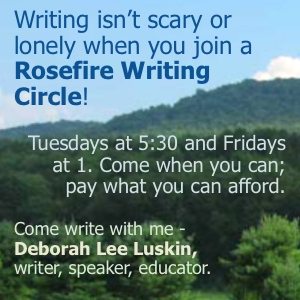



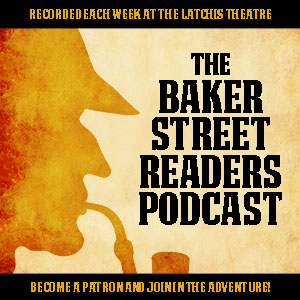
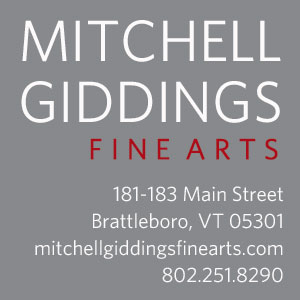


Love it
I’ll be sending this. Thanks Chris!
Don’t think there’ll be any real progress in the Beest book until primary season is over. 🙂
Thanks!
Glad you enjoyed it. There are lots of little details in there, almost imperceptible. (The cake rocks from the blast, when the big alien raises his hand, the flame gets pushed a bit from the air moving. That sort of thing.)
For anyone else working on a long, tedious project, I can say for sure that if you keep at it you will finish eventually. Lots of little things do add up.
My stack of artwork for this is about 3.5 inches thick. About 600 pages or so.
"I have to draw the table and cake the same way over and over."
One of the talents in animation has to be patience to keep the moving characters and scenes visually consistent.
poses
That’s partially why pose-to-pose animation came about.
Take the cake lifting at the beginning here. To get that worked out to match the timing, I drew the character standing up facing forward, then another pose as it bends to its left in anticipation of the move to the right, then a pose where the cake gets picked up, then another with the cake lifted high above the table, then a final pose resting the cake on the table.
That gave me the key drawings for the scene, and I knew roughly where the character (and its head, arms, body, and legs) would be throughout. Each pose could be made to be the right size and position, providing the consistency for the action.
Then we go back and fill in all the in-between drawings. The key drawings provide the guide, like an actor hitting their mark. The in-betweens are just as important, but they are a bit easier because you have other artwork to keep you on track.
It’s a really interesting and unique art form.
Famous among pencil users!
The pencil company just featured this animation on their page:
https://www.facebook.com/KohINoorUSA/
I recommend the woodless pencils for projects like this. They hold up to the abuse.
Festival in NYC
TROMAnimation has accepted this for screening at their festival to be held April 30 from 6-11 at Lucky 13 Saloon in Brooklyn, 644 Sackett Street. If you are in the area, pop in!
Nice!
Congrats! That’s very cool.
Brooklyn is so artsy now I could never afford to live where I was born. 🙂
You're darn tootin!
Even artists can’t afford artsy Brooklyn anymore unless they’re very rich, well-paid artists. But I digress – it’s nice that Chris’ animation was accepted and I hope people enjoy it.